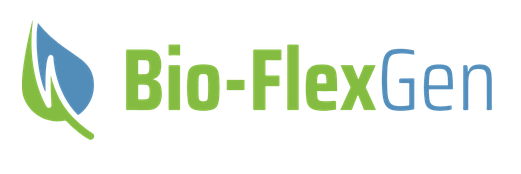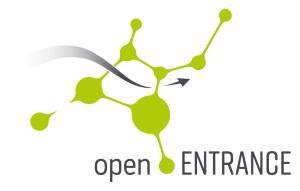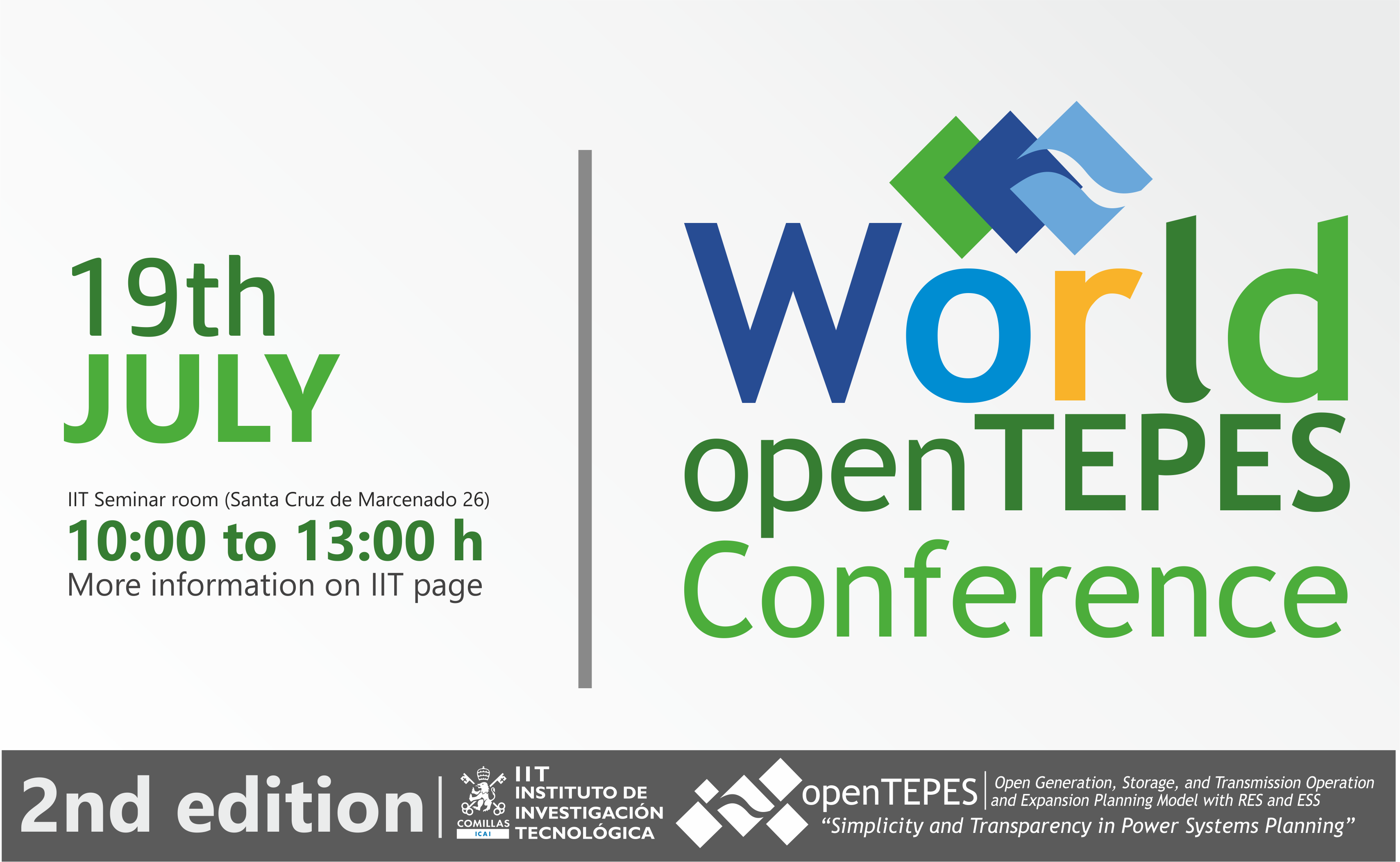Introduction
The Open Generation, Storage, and Transmission Operation and Expansion Planning Model with RES and ESS (openTEPES) determines the investment plans of new facilities (generators, ESS, and electric lines, hydrogen pipelines, and heat pipes) to meet the forecasted demand at minimum cost. The objective is to evaluate the future generation, storage, and electric, hydrogen, and heat network needs. The main results are the guidelines for the future structure of the generation, storage, and transmission systems.
The openTEPES model represents a decision support system for defining the integrated generation, storage, and transmission resource planning (IRP, GEP+SEP+TEP) of a large-scale electric system at the tactical level (i.e., time horizons of 10-20 years), defined as a set of generation, storage, and (electric, hydrogen, and heat) networks dynamic investment decisions for several future years. The user pre-defines the expansion candidates, so the model determines the optimal decisions among those specified by the user.
It automatically determines optimal expansion plans that satisfy multiple attributes simultaneously. Its main features are:
- Dynamic (perfect foresight): the scope of the model corresponds to several periods (years) on a long-term horizon, for example 2030, 2035 and 2040.
It hierarchically represents the different time horizons for decision making in an electricity system:
- Load level: one hour, e.g., 01-01 00:00:00+01:00 to 12-30 23:00:00+01:00
Time division allows a user-defined flexible representation of time periods for evaluating system operation. It can also be run with chronological periods of several consecutive hours (two-hour, three-hour resolution) to reduce the computational burden without sacrificing accuracy. The model can be run with a single period (year) or with multiple periods (years) to allow analysis of system evolution. The time definition also allows the specification of disconnected representative periods (e.g., days, weeks) to evaluate system operation. The model can be run with a single period (year) or with multiple periods (years) to allow analysis of system evolution. The time definition can also specify unrelated representative periods (e.g., days, weeks) to evaluate system operation. The period (year) must be represented by 8736 hours because several model concepts representing the system operation are based on weeks (168 hours) or months (made of 4 weeks, 672 hours)
- Stochastic: several stochastic parameters are considered that can influence the optimal generation, storage and transmission expansion decisions. The model considers stochastic medium-term annual uncertainties (scenarios) related to the system operation. These operational scenarios are associated with renewable energy sources, energy inflows and outflows, natural water inflows, operating reserves, inertia, and electricity, hydrogen, and heat demand.
The objective function includes the two main quantifiable costs: the investment costs for generation, storage, and transmission (CAPEX) and the expected variable operation costs (including generation, consumption, emissions, and reliability costs) (system OPEX).
The model formulates a two-stage stochastic optimization problem, including binary generation, storage, and electric, hydrogen, and heat network investment/retirement decisions, generation operation decisions (commitment, startup, and shutdown decisions are also binary), and electric line-switching decisions. Capacity expansion takes into account the adequacy system reserve margin and minimum and maximum energy constraints.
The highly detailed operation model is an electric network-constrained unit commitment (NCUC) based on a tight and compact formulation, including operating reserves with a DC power flow (DCPF), including electric line switching decisions. The ohmic losses of the electric network are considered proportional to the electric line flow. It considers different energy storage systems (ESS), such us pumped-hydro storage, battery, demand response, electric vehicles, solar thermal, alkaline water electrolyzer, etc. It allows analysis of the trade-off between the investment in generation/transmission/pipeline and the investment and/or use of storage capacity.
The model also allows a representation of the hydro system based on volume and water inflow data considering the water stream topology (hydro cascade basins). If they are not available it runs with an energy-based representation of the hydro system.
Also, it includes a representation of Power to Hydrogen (P2H2) by setting the hydrogen demand satisfied by the production of hydrogen with electrolyzers (consume electricity to produce hydrogen) and a hydrogen network to distribute it. Besides, it includes a representation of Power to Heat (P2H) by setting the heat demand satisfied by the production of heat with heat pumps (consume electricity to produce heat) and a heat network to distribute it. If they are not available it runs with just the other energy carriers.
The main results of the model can be structured in these topics:
- Investment: (generation, storage, hydro reservoirs, electric lines, hydrogen pipelines, and heat pipes) investment decisions and cost
- Operation: unit commitment, startup, and shutdown of non-renewable units, unit output and aggregation by technologies (thermal, storage hydro, pumped-hydro storage, RES), RES curtailment, electric line, hydrogen pipeline, and heat pipe flows, line ohmic losses, node voltage angles, upward and downward operating reserves, ESS inventory levels, hydro reservoir volumes, power, hydrogen, and heat not served
- Emissions: CO2 emissions by unit
- Marginal: Locational Short-Run Marginal Costs (LSRMC), stored energy value, water volume value
- Economic: operation, emission, and reliability costs and revenues from operation and operating reserves
- Flexibility: flexibility provided by demand, by the different generation and consumption technologies, and by power not served
Results are shown in csv files and graphical plots.
openTEPES is being used by investors, market participants, system planners, and consultants. A careful implementation has been done to avoid numerical problems by scaling parameters, variables and equations of the optimization problem allowing the model to be used for very large-scale cases, e.g., the European system with hourly detail. For example, a European operation case study with hourly detail has reached 22 million constraints and 27 million variables of an LP problem. The mainland Spain operation case has reached 5 million constraints and 5 million variables (1.3 million binary).
Research projects
The model has being used in these research projects:
-
Electricity Market Modelling, developed for Repsol. November 2023 - April 2024. L. Olmos, A. Ramos, S. Gómez Sánchez
-
Day-ahead market price simulation tool (HESIME), developed for the Ministry of Science and Innovation/State Research Agency (10.13039/501100011033) under the program Public-Private Partnerships with NextGenerationEU/PRTR funds (CPP2022-009809). April 2023 - March 2026. L. Olmos, A. Ramos, S. Gómez Sánchez

- Open Modelling Toolbox for development of long-term pathways for the energy system in Africa (OpenMod4Africa), developed for the European Union. July 2023 - June 2026. L. Olmos, S. Lumbreras, A. Ramos, M.A.E. Elabbas

- Highly-efficient and flexible integration of biomass and renewable hydrogen for low-cost combined heat and power generation to the energy system (Bio-FlexGen), developed for the European Union. September 2021 - August 2024. J.P. Chaves, A. Ramos, J.F. Gutierrez

-
Analysis of the role of pumped-hydro storage power plants in the Spanish NECP 2030, developed for Iberdrola. July 2023 - October 2023. A. Ramos, P. Linares, J.P. Chaves, M. Rivier, T. Gómez
-
Support in the preparation of the application to the call on innovative energy storage systems, developed for Glide Energy. June 2023 - October 2023. L. Rouco, A. Ramos, F.M. Echavarren, R. Cossent
-
Analysis of the technical and economic benefits of solar thermal generation in the Spanish peninsular system, developed for ProTermosolar. March 2023. A. Ramos, L. Sigrist
-
Hydro generation advanced systems: modeling, control, and optimized integration to the system (AVANHID), developed for the Ministry of Science and Innovation/State Research Agency (10.13039/501100011033) under the program Public-Private Partnerships with NextGenerationEU/PRTR funds (CPP2021-009114). December 2022 - November 2025. A. Ramos, J.M. Latorre, P. Dueñas, L. Rouco, L. Sigrist, I. Egido, J.D. Gómez Pérez, F. Labora

-
Local markets for energy communities: designing efficient markets and assessing the integration from the electricity system perspective (OptiREC), developed for the Ministry of Science and Innovation/State Research Agency (10.13039/501100011033) under the program Strategic projects oriented to the ecological transition and digital transition with NextGenerationEU/PRTR funds (TED2021-131365B-C43). December 2022 - November 2024. A. Ramos, J.P. Chaves, J.M. Latorre, J. García, M. Troncia, S.A. Mansouri, O.M. Valarezo, M. Mohammed

- Delivering the next generation of open Integrated Assessment MOdels for Net-zero, sustainable Development (DIAMOND), developed for the European Union. October 2022 - August 2025. S. Lumbreras, L. Olmos, A. Ramos

-
Application of the ENTSO-e cost-benefit analysis method to Aguayo II pumped-hydro storage, developed for Repsol. June 2022. A. Ramos, L. Olmos, L. Sigrist
-
Application of the ENTSO-e cost-benefit analysis method to Los Guájares pumped-hydro storage, developed for VM Energía. May 2022 - June 2022. A. Ramos, L. Olmos, L. Sigrist
- Impact of the electric vehicle in the electricity markets in 2030, developed for Repsol. November 2021 - February 2022. A. Ramos, P. Frías, J.P. Chaves, P. Linares, J.J. Valentín
-
European Climate and Energy Modelling Forum (ECEMF), developed for the European Union. May 2021 - December 2024. S. Lumbreras, A. Ramos, L. Olmos, C. Mateo, D. Santos Oliveira

-
Assessment of the storage needs for the Spanish electric system in a horizon 2020-2050 with large share of renewables, developed for the Instituto para la Diversificación y Ahorro de la Energía (IDAE). January 2021 - June 2022. A. Ramos, P. Linares, J.P. Chaves, J. García, S. Wogrin, J.J. Valentín
-
FlexEner. New 100% renewable, flexible and robust energy system for the integration of new technologies in generation, networks and demand - Scenarios, developed for Iberdrola under Misiones CDTI 2019 program (MIG-20201002). October 2020 - December 2023. M. Rivier, T. Gómez, A. Sánchez, F. Martín, A. Ramos, J.P. Chaves, S. Gómez Sánchez, L. Herding, T. Freire
-
Improving energy system modelling tools and capacity, developed for the European Commission. October 2020 - June 2022. S. Lumbreras, A. Ramos, P. Linares, D. Santos, M. Pérez-Bravo, A.F. Rodríguez Matas, J.C. Romero
-
MODESC – Platform of innovative models for speeding the energy transition towards a decarbonized economy, developed for the Ministry of Science and Innovation under Retos Colaboración 2019 program (RTC2019-007315-3). September 2020 - December 2023. T. Gómez, M. Rivier, J.P. Chaves, A. Ramos, P. Linares, F. Martín, L. Herding

- Open ENergy TRansition ANalyses for a low-carbon Economy (openENTRANCE), developed for the European Union. May 2019 - June 2023. L. Olmos, S. Lumbreras, A. Ramos, E. Alvarez

-
Analysis of the expansion and operation of the Spanish electricity system for a 2030-2050 time horizon, developed for Iberdrola. January 2019 - December 2021. M. Rivier, T. Gómez, A. Sánchez, F. Martín, T. Freire, J.P. Chaves, T. Gerres, S. Huclin, A. Ramos
Publications
The openTEPES model has been used in these publications:
- D. Santos-Oliveira, J. Lecarpentier, S. Lumbreras, L. Olmos, A. Ramos, M. Chammas, Th. Brouhard (2024) “The impact of EV penetration on the European Power System: the Tradeoffs in Storage” Social Science Research Network 10.2139/ssrn.4700642 10.2139/ssrn.4700642
- A. Ramos, S. Huclin and J.P. Chaves (2023), “Analysis of different flexible technologies in the Spain NECP for 2030”. Front. Built Environ. 9:1065998. 10.3389/fbuil.2023.1065998
- A. Ramos, E. Álvarez “Software implementation”. Second World openTEPES Conference, July 2023. (Presentation)
- A. Ramos, S. Huclin, J.P. Chaves “Analysis of different flexible technologies in the Spain NECP for 2030”. Second World openTEPES Conference, July 2023. (Presentation)
- E. Álvarez, L. Olmos, A. Ramos, K. Antoniadou-Plytaria, D. Steen, and L.A. Tuan “Values and Impacts of Incorporating Local Flexibility Services in Transmission Expansion Planning”. Second World openTEPES Conference, July 2023. (Presentation)
- D. Oliviera, L. Olmos, A. Ramos, S. Lumbreras “Impact of the different EV charging strategies at European scale”. Second World openTEPES Conference, July 2023.
- J.D. Gómez-Pérez, A. Ramos “Characterizing the Spanish hydro basins for their use in openTEPES”. Second World openTEPES Conference, July 2023. (Presentation)
- S. Gómez, A. Ramos, M. Rivier, T. Freire “Role of openTEPES in the FlexEner project”. Second World openTEPES Conference, July 2023. (Presentation)
- P. Linares, J.P. Chaves, J. García, J.F. Gutiérrez, A. Ramos, J.J. Valentín “How much storage do we need for the energy transition?”. Second World openTEPES Conference, July 2023. (Presentation)

- A. Ramos “Ayudando en los estudios eléctricos para hacer la transición energética”. OptiMad 2023, Mayo 2023. (Presentation)
- J.J. Valentín, J.P. Chaves, P. Linares, A. Ramos “Análisis de las necesidades de almacenamiento eléctrico de España en el horizonte 2030”. Papeles de Energía 174, 72-91, Diciembre 2022.
- S. Huclin et al. “Exploring the roles of storage technologies in the Spanish electricity system with high share of renewable energy” Energy Reports 8: 4041-4057, November 2022. 10.1016/j.egyr.2022.03.032
- E.F. Alvarez, L. Olmos, A. Ramos, K. Antoniadou-Plytaria, D. Steen, and L.A. Tuan “Values and Impacts of Incorporating Local Flexibility Services in Transmission Expansion Planning” Electric Power Systems Research 212, July 2022. 10.1016/j.epsr.2022.108480
- E.F. Alvarez, L. Olmos, A. Ramos, K. Antoniadou-Plytaria, D. Steen, and L.A. Tuan “Values and Impacts of Incorporating Local Flexibility Services in Transmission Expansion Planning” PSCC 2022. Porto, Portugal. June 2022.
- A. Ramos, E. Quispe, S. Lumbreras “OpenTEPES: Open-source Transmission and Generation Expansion Planning” SoftwareX 18: June 2022. 10.1016/j.softx.2022.101070
- A. Ramos, S. Huclin, J.P. Chaves “Analysis of different storage technologies in the Spain NECP for 2030” IEA Wind Task 25 Spring 2022 meeting. May 2022. (Presentation)
- A. Ramos, E. Alvarez “openTEPES” First openTEPES World Conference. March 2022. (Presentation)
- A. Ramos “Assessing the operational flexibility provided by energy storage systems. The Spanish system in 2030” IEA Wind Task 25 Spring 2021 meeting. April 2021. (Presentation)
- A. Ramos, S. Huclin, J.P. Chaves “Which role will play the pumped-storage hydro and the batteries in the future Spanish system: a case study” IEEE Sustainable Power & Energy Conference iSPEC 2020. Chengdu, Sichuan (China). November 2020. (Presentation)
Contact Us
Andrés Ramos
andres.ramos@comillas.edu
More information here










